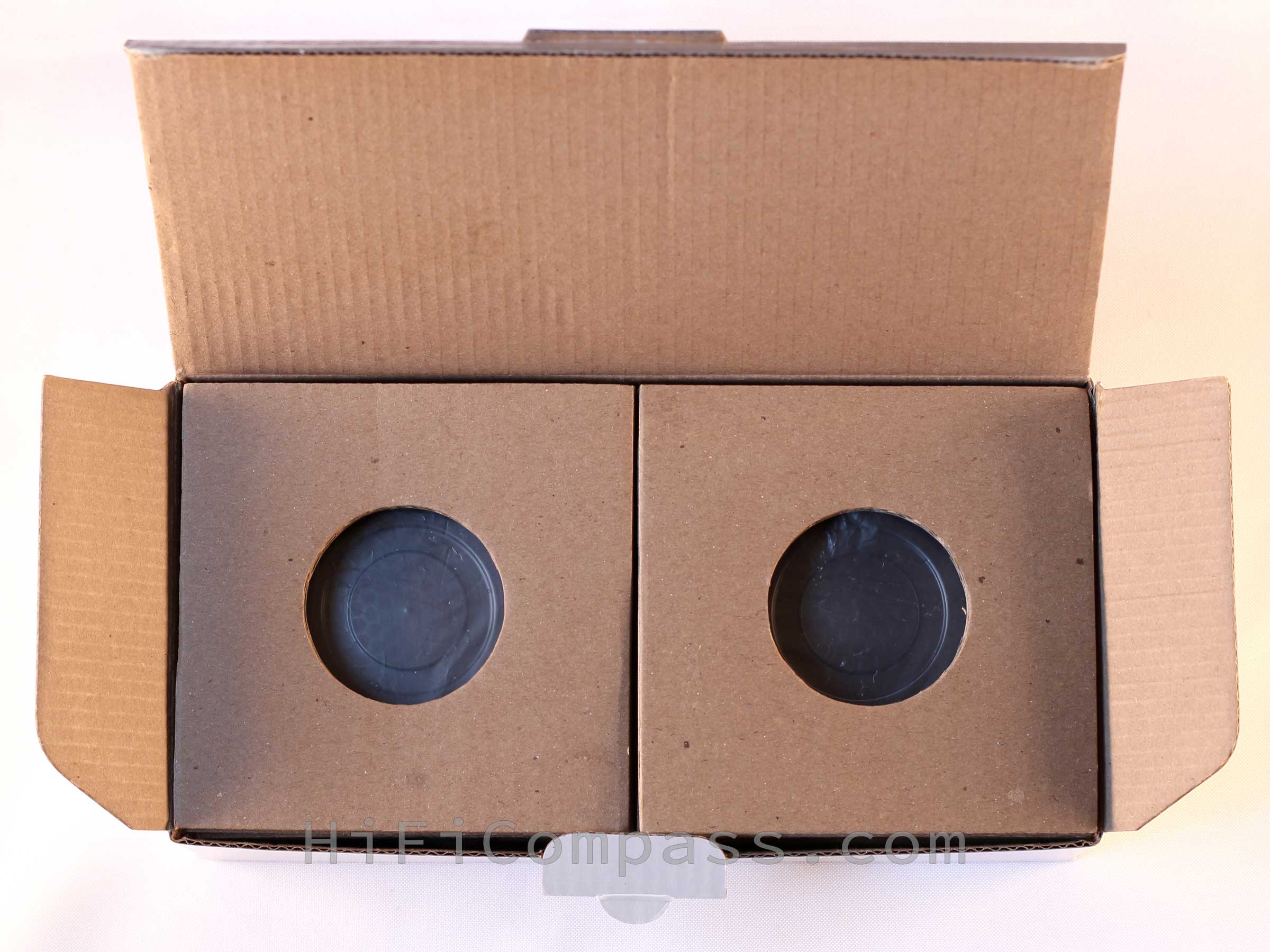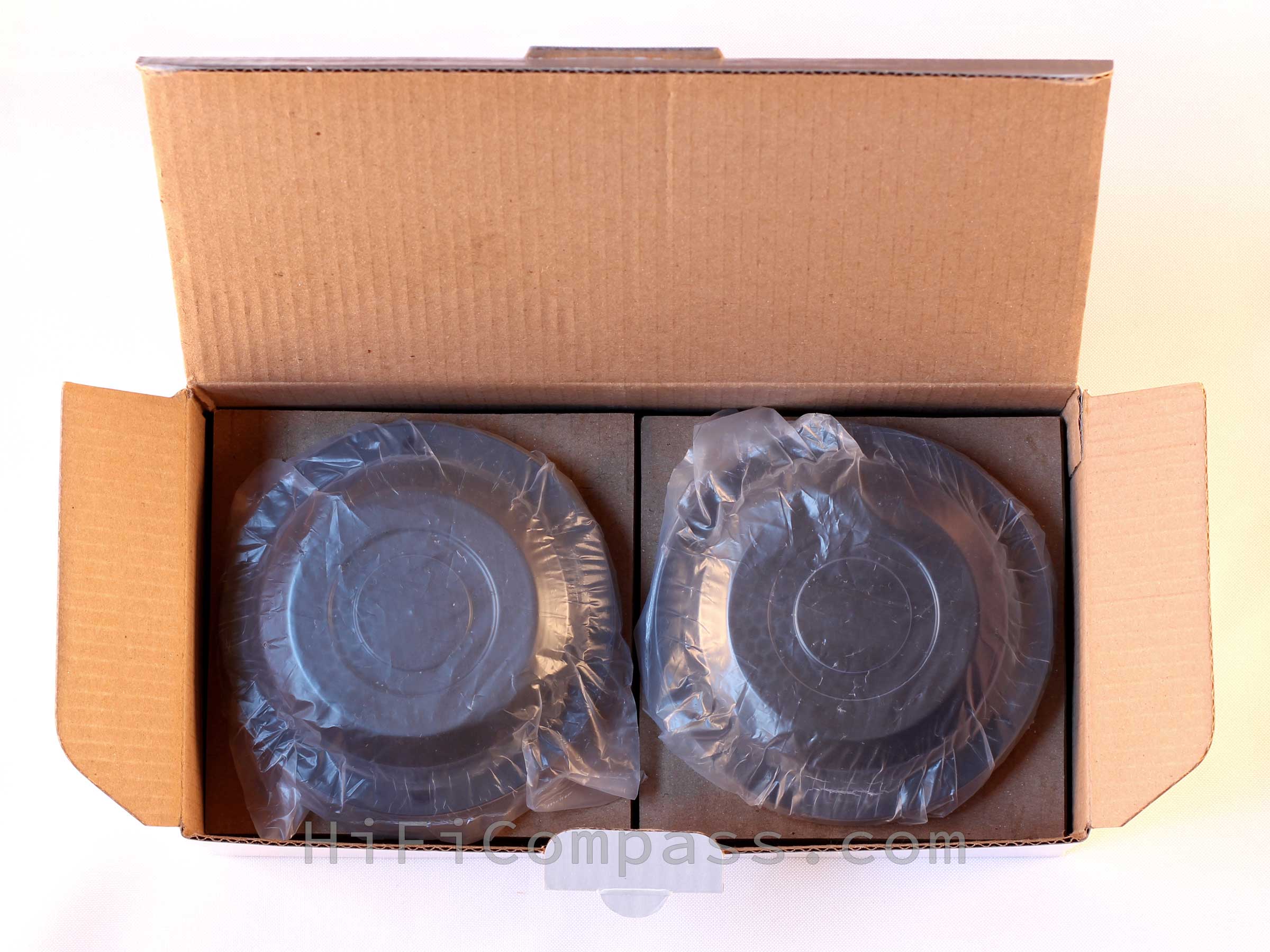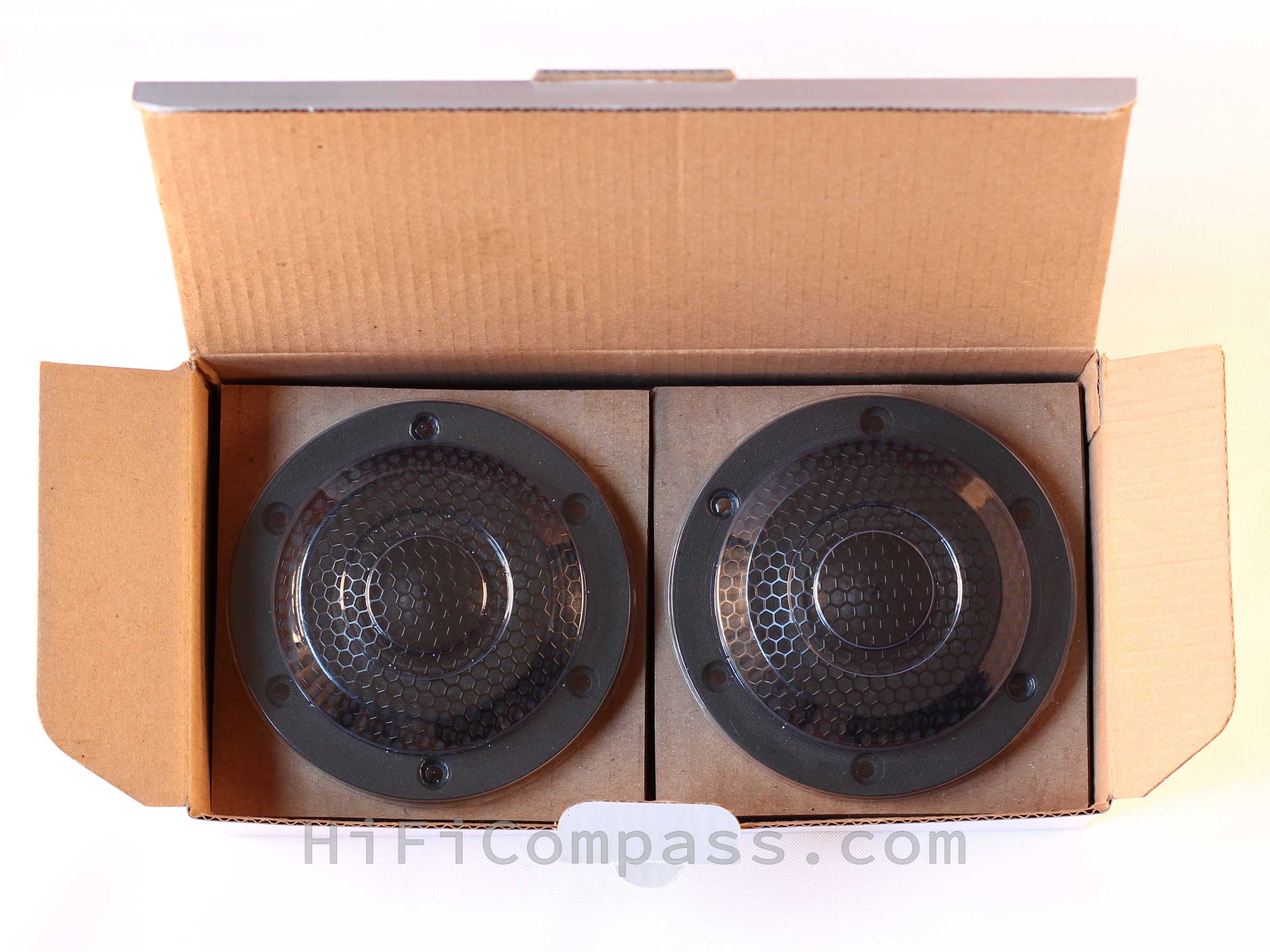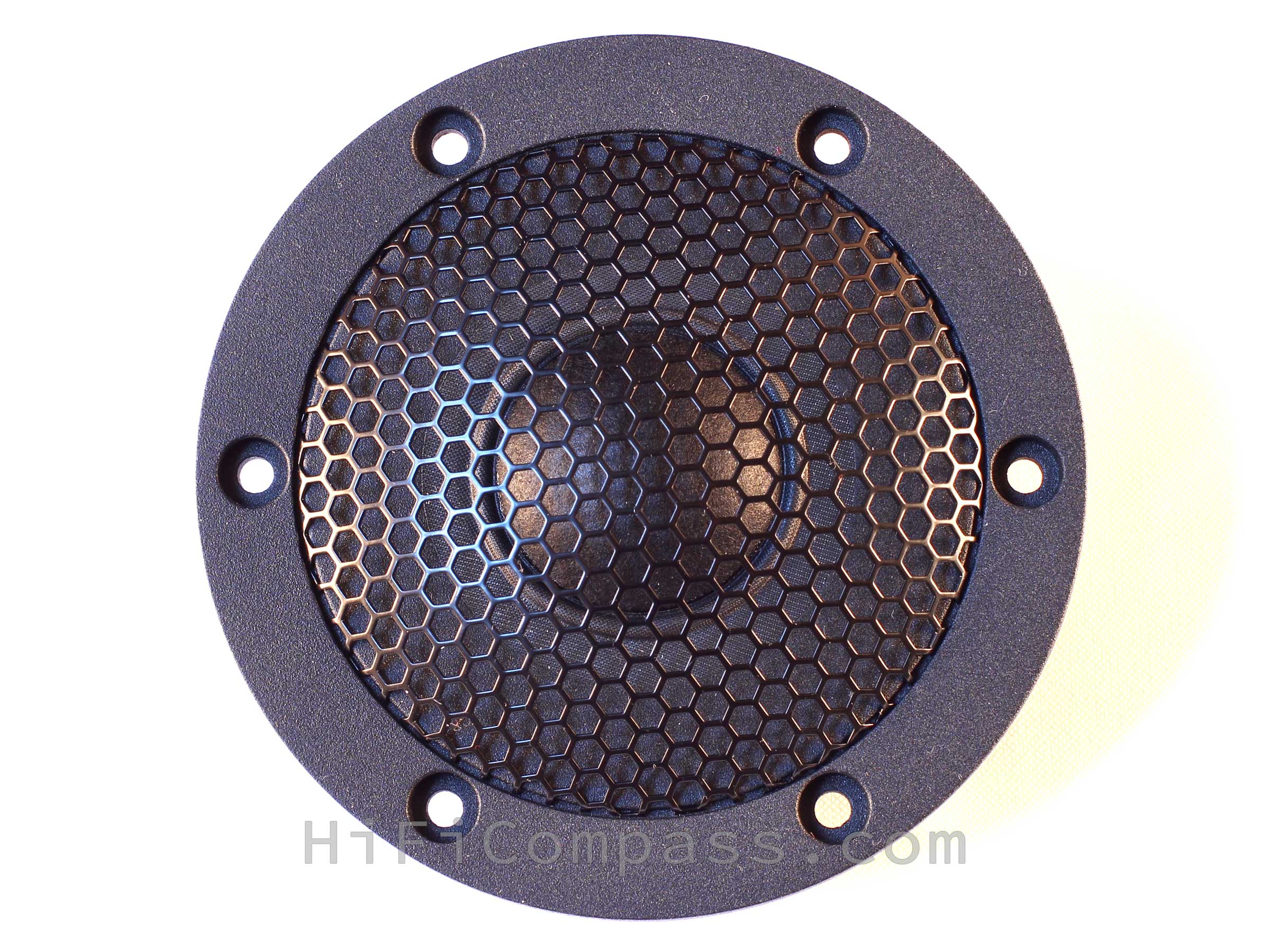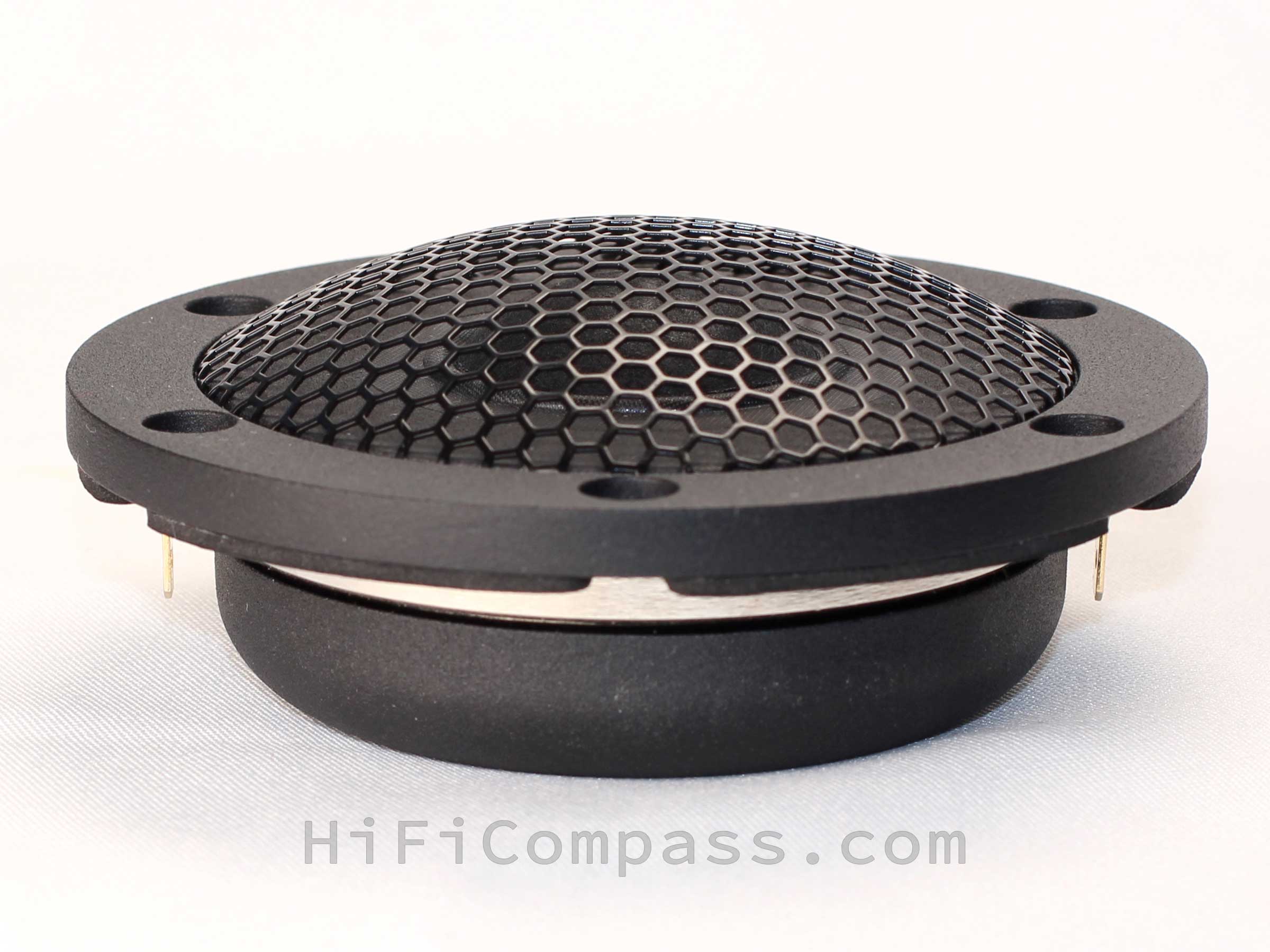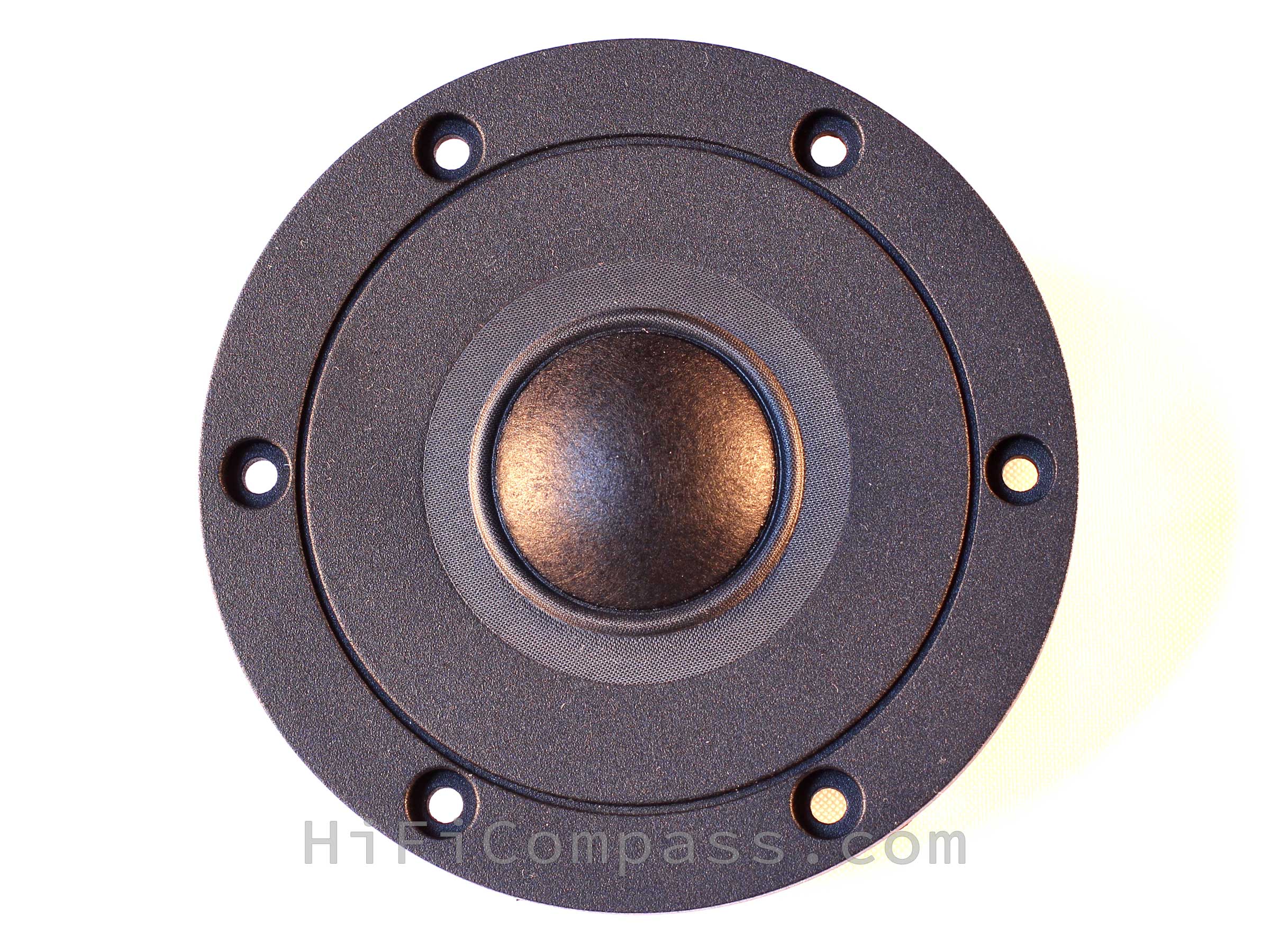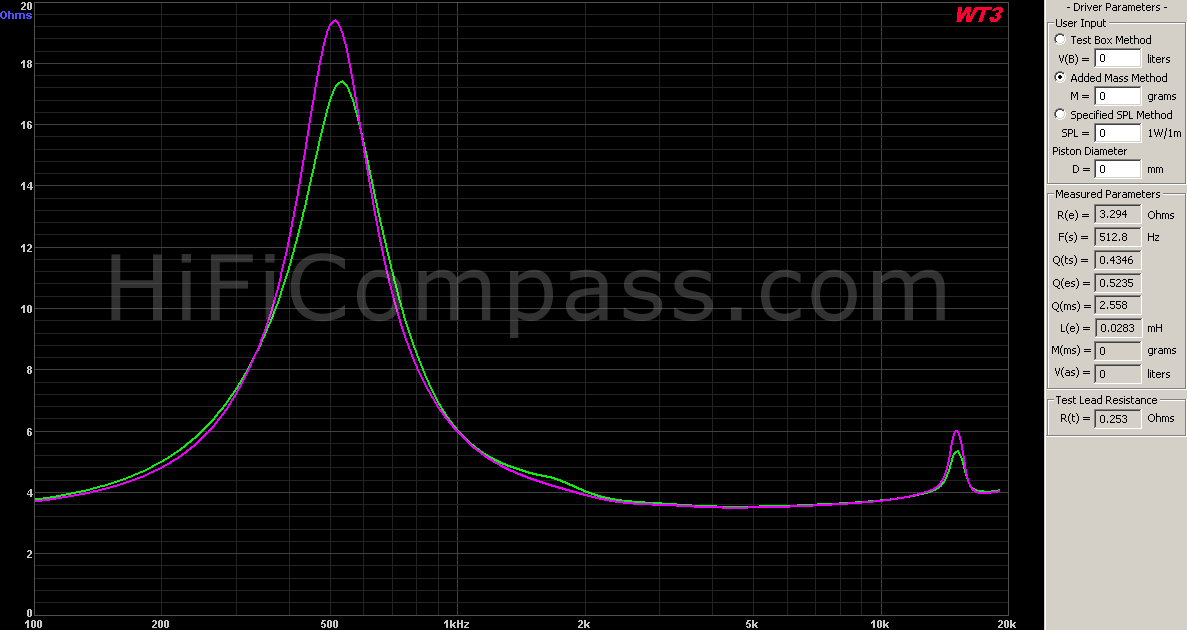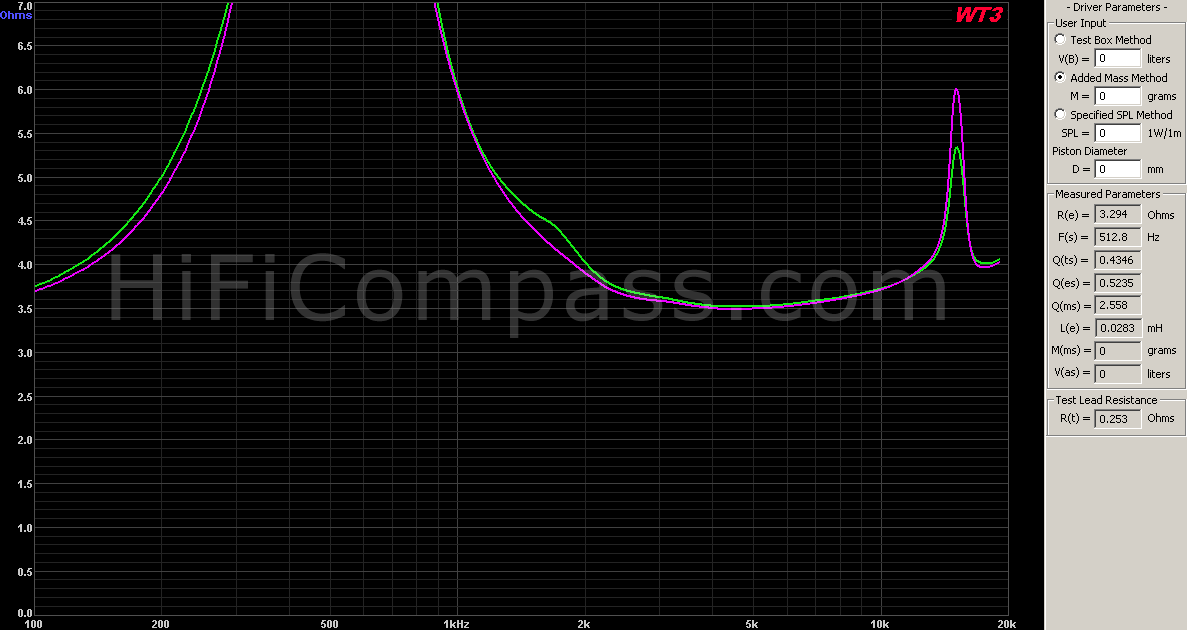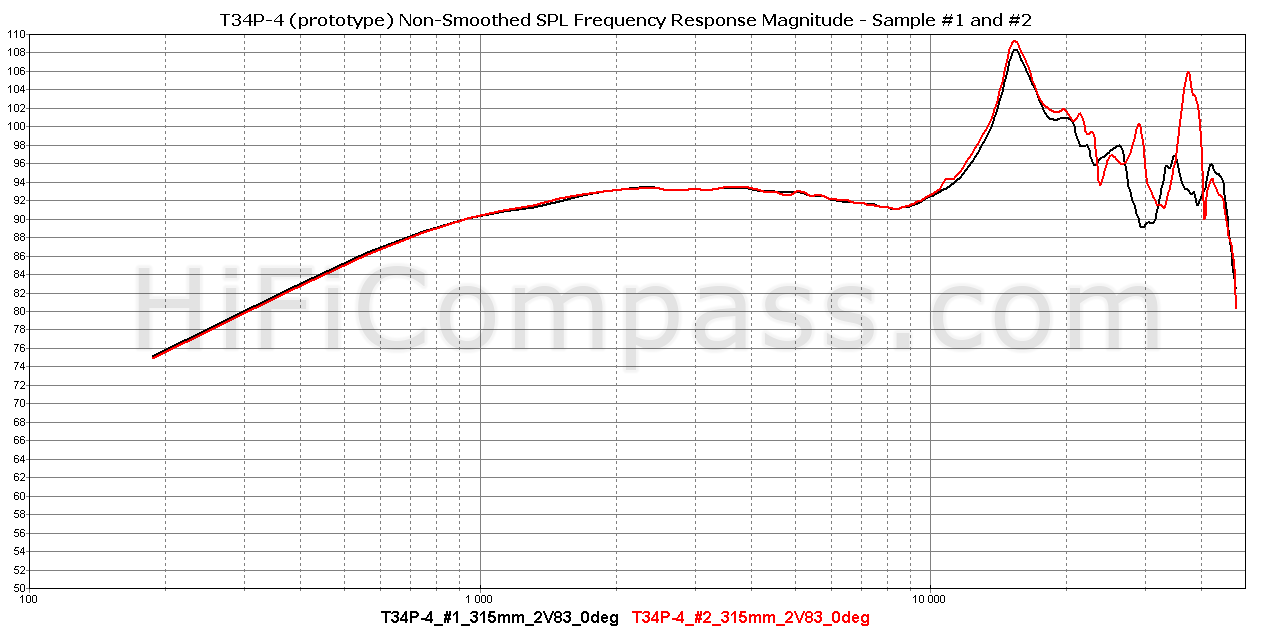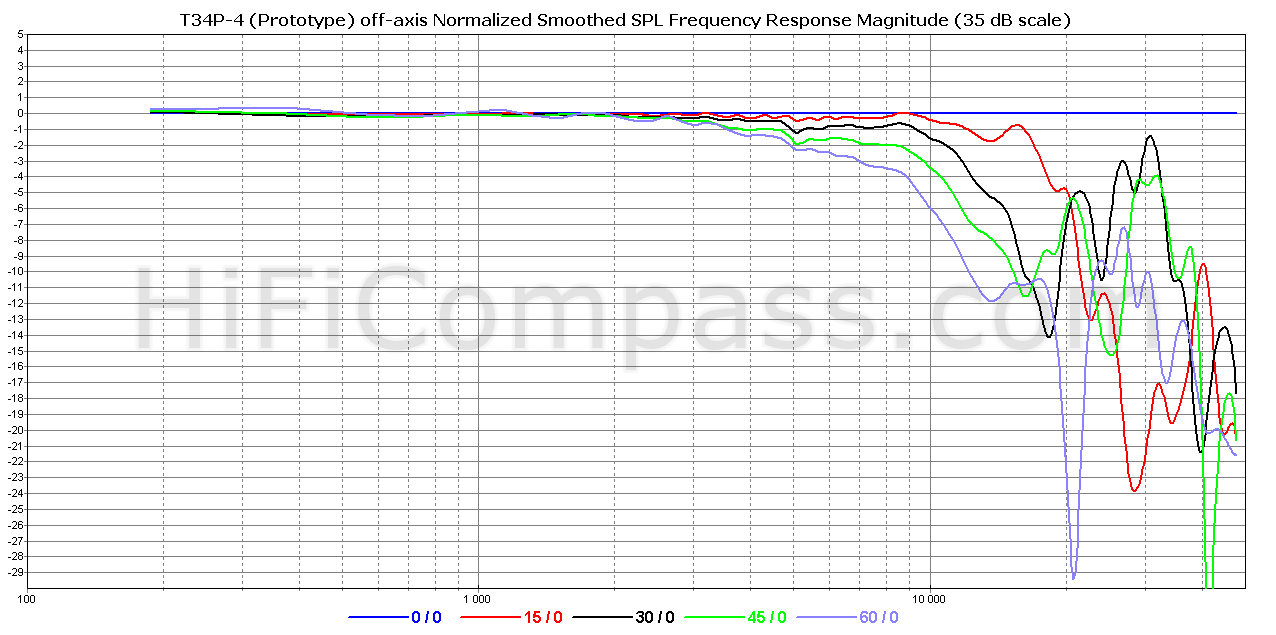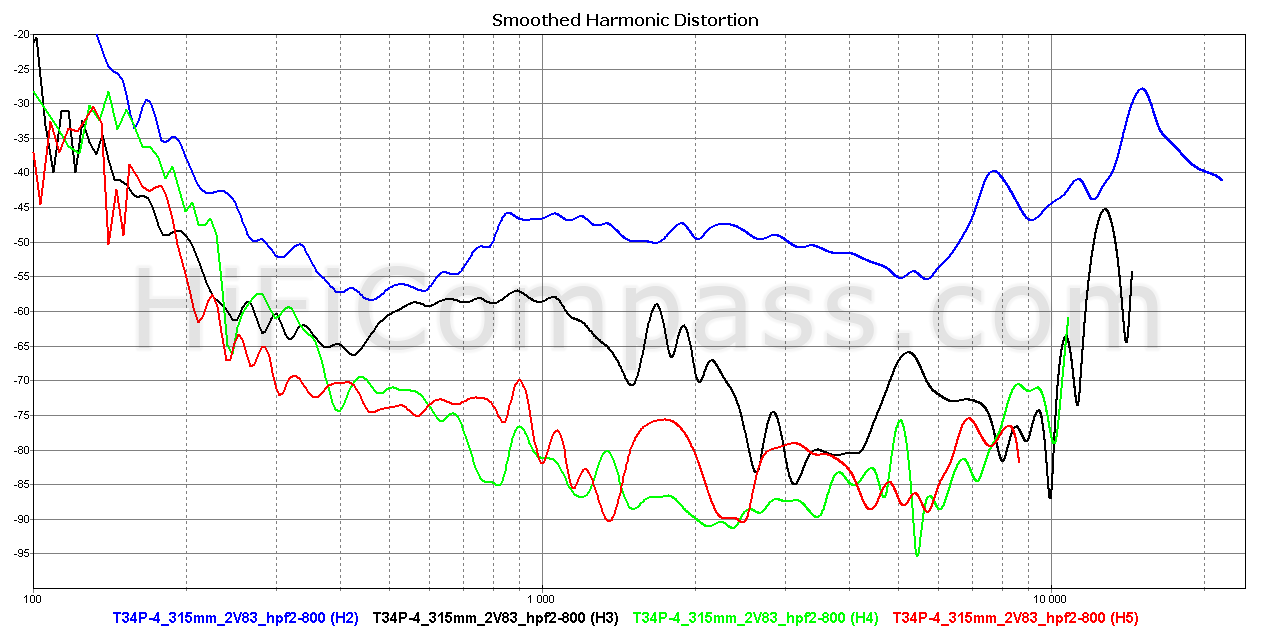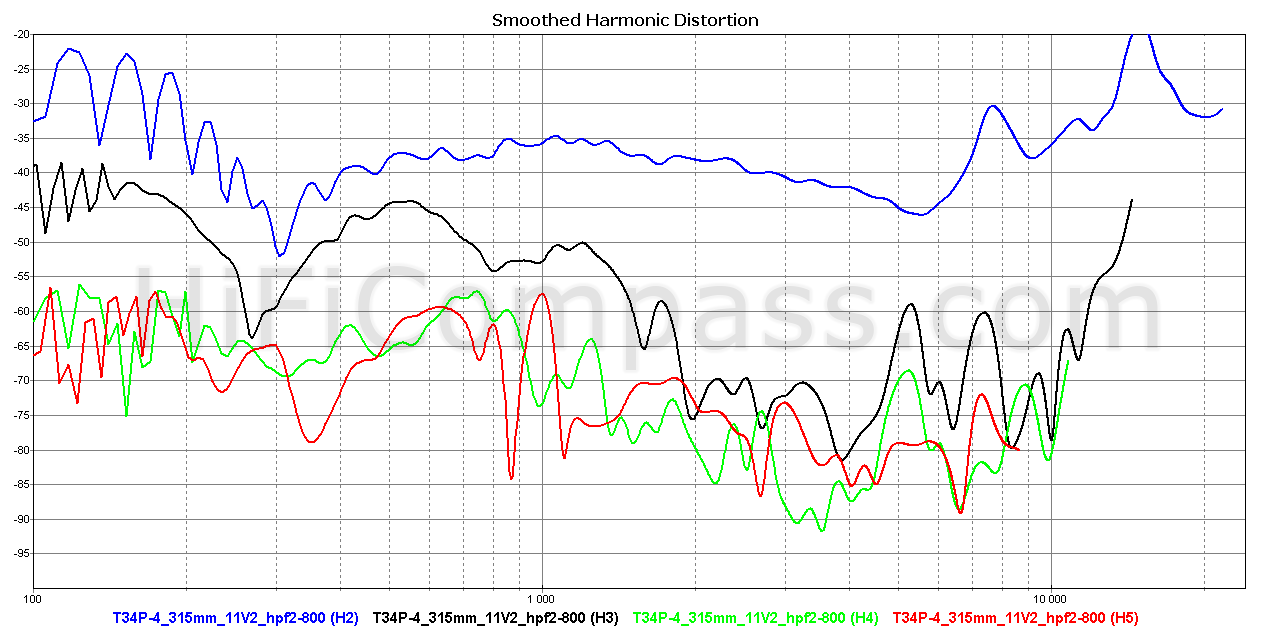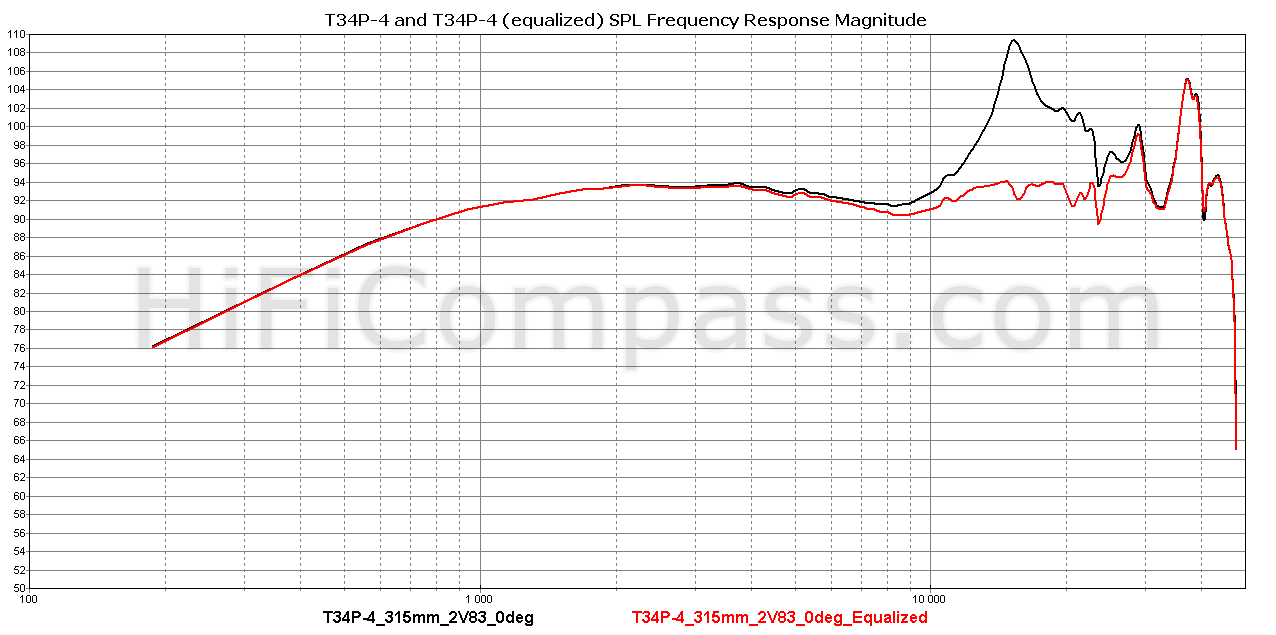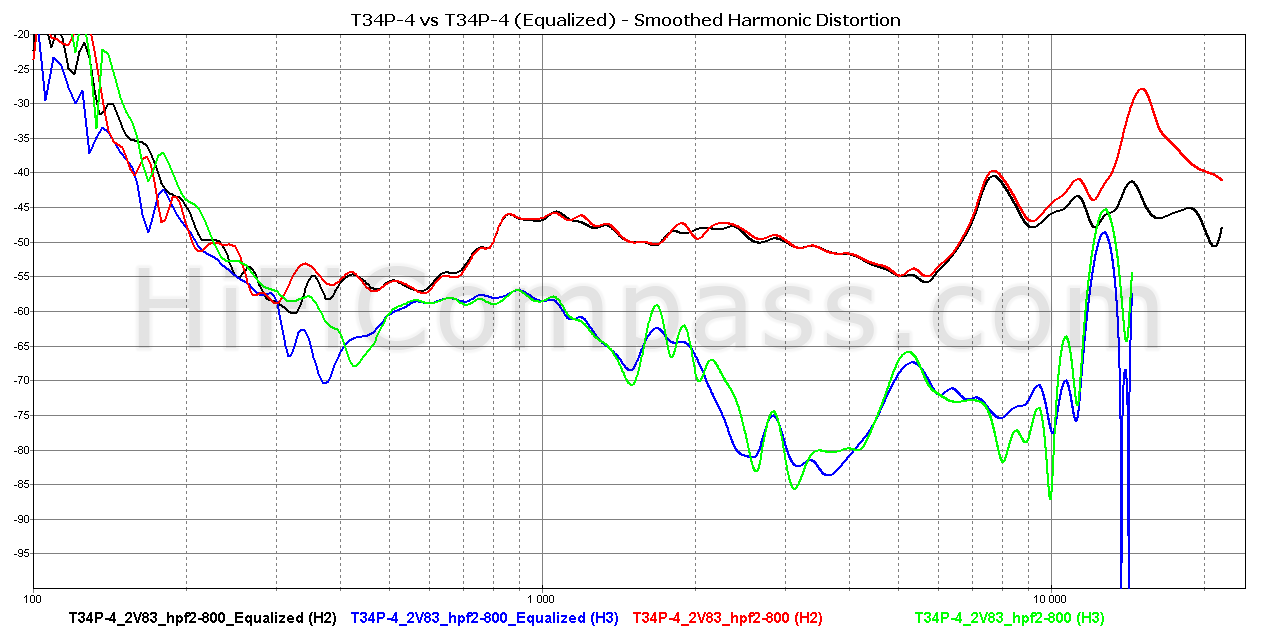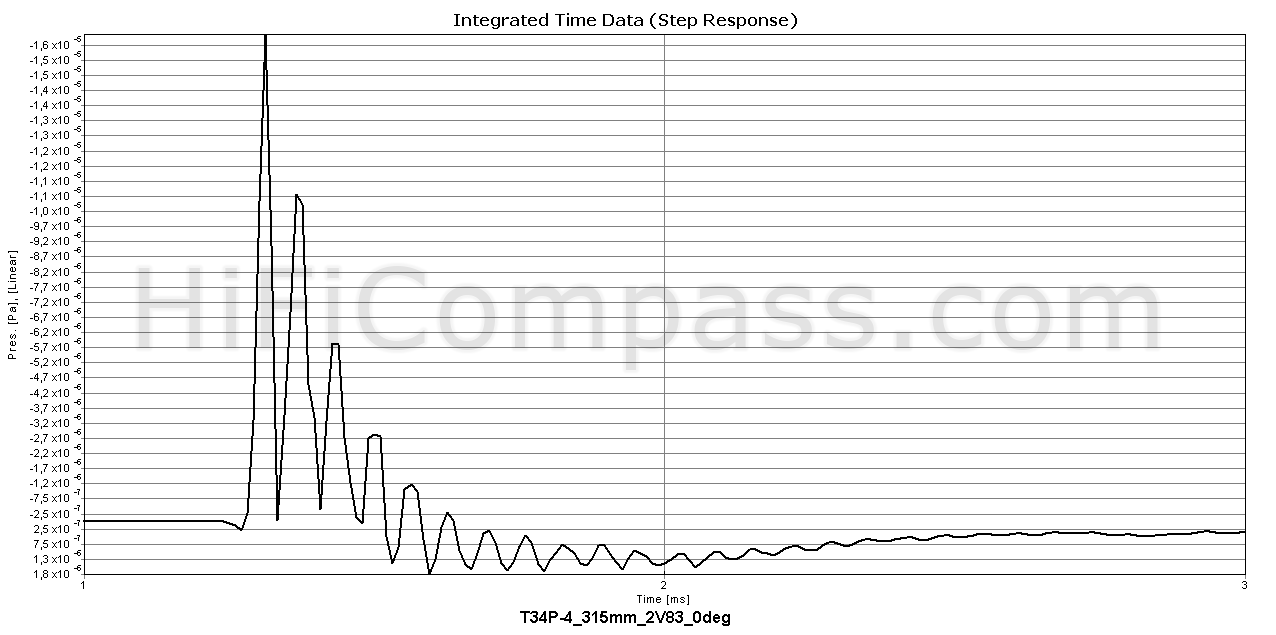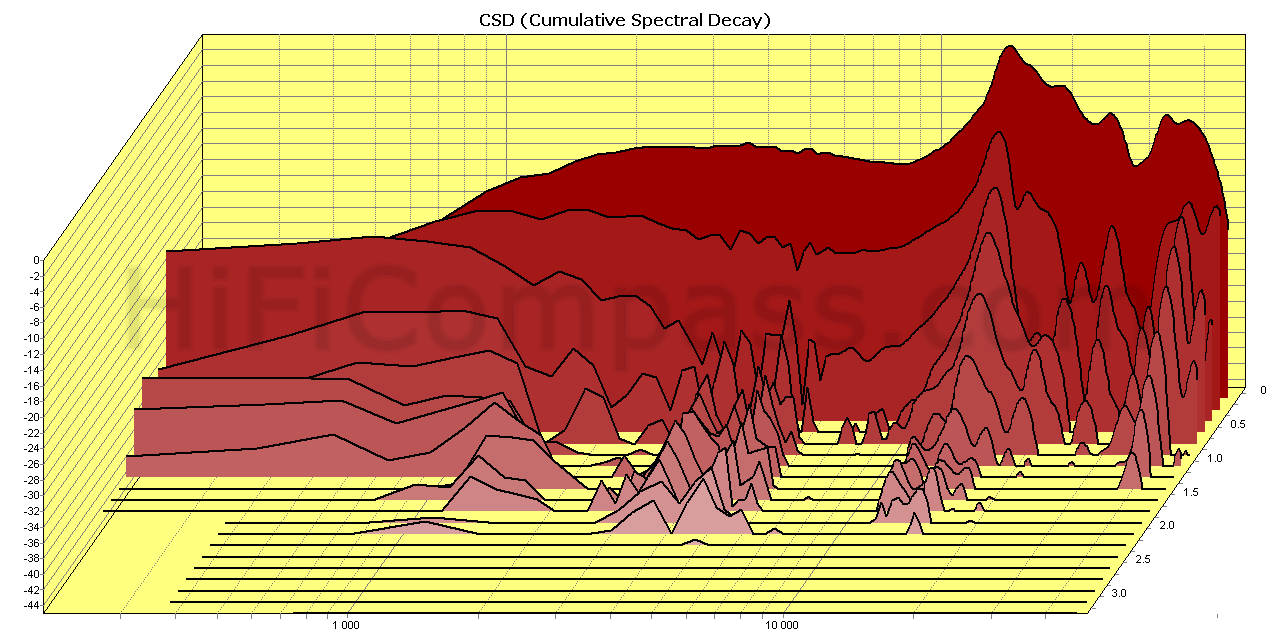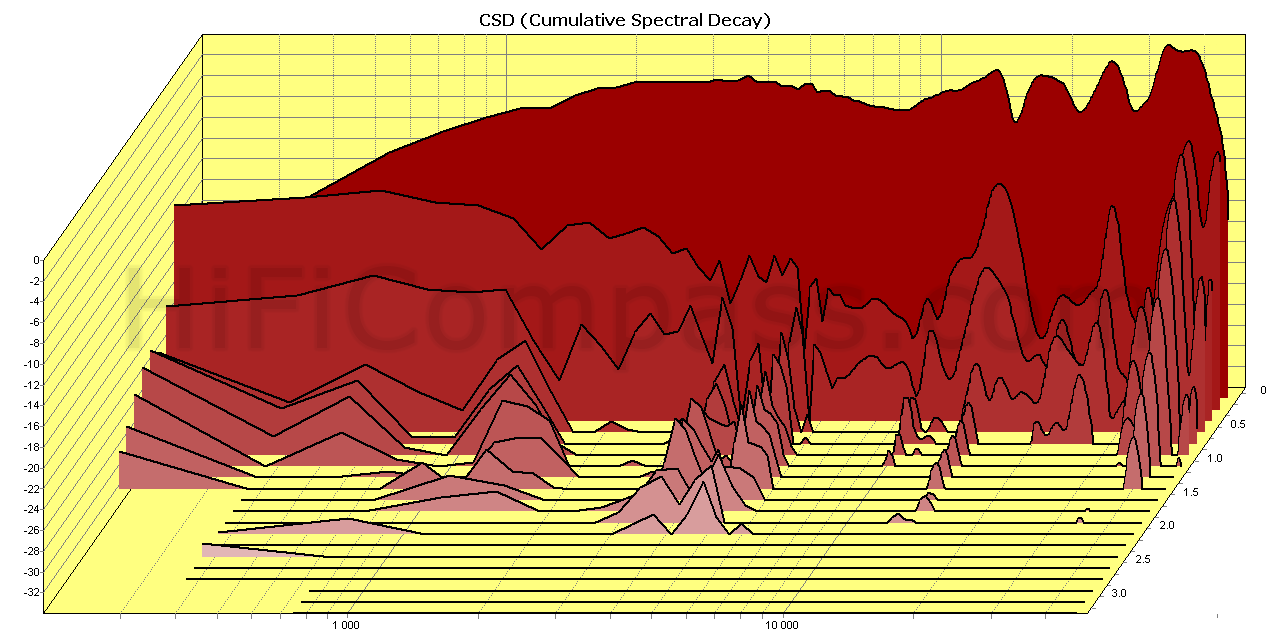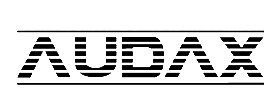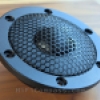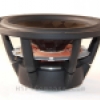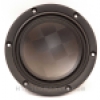HiFiCompass
BlieSMa T34P-4 Paper Dome concept-tweeter
Initially, this review was not planned and should not appear at all, however, I thought that the product is quite extraordinary and still deserves to be introduced to a wide audience. We are talking about a dome tweeter with a 34 mm paper diaphragm BlieSMa T34P-4. This is not a serial model or even a prototype. It would be more correct to call it a concept-tweeter by analogy with concept-cars.
The story behind it is as follows. Over the years, I have been able to get acquainted with tweeters of all possible designs with diaphragms made of a wide variety of materials, including diamond, boron nitride, ceramic, aluminum, titanium, magnesium, beryllium, silk, Mylar, Kapton, Kevlar, carbon (ugh... what else did I forget to mention?). The only thing I haven't heard yet, but would really like to, is a traditional dome tweeter, but with a paper diaphragm. The reason I haven't heard one is that they simply don't exist. Although, the idea itself is not new, I know at least a couple of such designs from the late 60s-early 80s of the last century, namely 3/4" tweeter A.19 from Acoustic Research and 1" tweeters AD01632 (AD01420 - the same, only with a small rear chamber and reduced from 1300 to 950 Hz resonance frequency) from Philips. Unfortunately, I didn't catch them, as they were released before I was born or I was too young.
Why I would like to hear this particular design is easy to answer. My experience shows that absolutely any diaphragm material has its own imprint on the sound signature of any speaker. I have a special piety for paper because of its natural timbre and versatility. Moreover, the sound character of miniature paper cone tweeters, such as the vintage JBL LE26 and modern GRS PRT-8, is quite appealing to me too.
The answer to the question of why dinosaurs paper domes died out is more or less clear. Their problems are well known - high mass, low stiffness and therefore tendency to resonance in the audible range, poor consistency and environmental resistance. Protective and reinforcing coatings do them better, but they weigh the diaphragm even more and steal the "paper" charm in the sound. As a result, they have not withstood the onslaught of more stable and reliable fabric, metal and composite diaphragms.
But the question of how they could sound today, on a modern, much more advanced motor than before, did not give me peace. The question is far from rhetorical and for help in answering it I turned to Stanislav Malikov, the owner and designer of the German company BlieSMa, whose T34B-4 tweeter, in my opinion, is an excellent candidate for this task, since it has an enormous motor with a magnetic field strength of as much as 2.2 Tesla and a linear stroke of 1.5 mm in one direction. With a beryllium diaphragm, its sensitivity reaches 98 dB/2.83 V, so even with a heavy paper diaphragm it should not fall below the acceptable 90 dB for home audio loudspeakers. Besides, I know that Stanislav likes to experiment and willingly takes on non-trivial tasks.
As a result, two years later, quite unexpectedly, I got a pair of these unusual paper dome T34P-4 concept-tweeters. I would like to express my great gratitude to Stanislav Malikov for his assistance in the realization of my "little dream".
Here you can get familiar with the BlieSMa history.
What did the manufacturer state?
From the above it goes without saying that any datasheet is out of the question. I can only say, from the Stanislav's words, that its design and parameters of the magnetic system are completely identical to the models T34A-4 and T34B-4, except for the diaphragm. Therefore, I will give some basic parameters for reference:
- Fully saturated neodymium motor with copper sleeve for very low non linear distortion
- 3mm linear excursion and large vent channel for undistorted low-end frequency operation
- Flush mounted surround and rear mounted magnet system for flat frequency response and wide off-axis response
- No ferrofluid for improved dynamics
- Underhung voice coil wound on titanium former
- Flexible and lightweight lead wires made in Denmark
- Thick aluminium powder coated flange
- Aluminium rear chamber with natural wool damping
- Gold plated wire terminals
- Nominal impedance - 4 Ohm
- Rated power handling - 80 W
- Net weight - 0.68 kg
- Force factor, BL - 3.5 T*m
- Magnetic flux density - 2.2 T
- Air gap height - 4.5 mm
- Voice coil height - 1.4 mm
- Voice coil diameter- 34 mm
- Voice coil layers - 2
- Linear excursion - 3 mm (p-p)
- Voice coil inductance, Le - 0.008 mH
- DC resistance, Re - 3.3 Ohm
- Wire material - CCAW
Of the numerical parameters, especially noteworthy are the highest magnetic flux density in the magnet gap - 2.2 Tesla, very low inductance - 0.008 mH and huge linear excursion - 3 mm(p-p).
The tweeters arrived in very reliable and standard for all BlieSMa tweeters corrugated cardboard packaging. The only new item for me was the plastic protective caps, which, as it turns out, are only supplied for tweeters with an unglued metal grille.
- The packaging is a sturdy package made of durable glossy corrugated cardboard. The tweeters are secured inside by cardboard inserts with shaped cutouts
- The quality of workmanship is top-notch. No traces of glue, scratches, dirt and dust, stains and dents on the diaphragm, chips, gaps and misalignments. Absolutely nothing to complain about
- The faceplate is solid 6 mm thick aluminum with six recessed mounting holes, which is covered with micro-textured black matte powder coating. A soft foam rubber gasket is glued to the back of the faceplate
- The back cover is solid aluminum about two millimeters thick. It is covered with microtextured black matte powder coating. When tapped with a finger, it is quite inert, but not deathly quiet
- The magnet is neodymium, very powerful. I have never seen a magnet of this size and strength in any other dome tweeter except the T34A-4 and T34B-4
- The surround is regular textile convex half-roll
- The dome diaphragm is made of black cellulose without any color tints. A close look reveals a characteristic fibrous structure. When lightly tapped you can feel the hardness and well-damped "paper" sound response
- The thick gold-plated terminals are absolutely firmly glued into the faceplate with epoxy glue. From personal experience, I believe that these are the most reliable terminals I have seen in tweeters. They can withstand multiple soldering with a powerful soldering iron
- The protective grille is metal, with a smooth semi-matte powder coating and a high degree (apparently about 70%) of acoustic transparency. The grille is attracted to the faceplate by the magnetic field of the motor with such force that it does not need to be glued at all
In general, the tweeter looks very solid and weighty, the design is well thought out, and there are not the slightest complaints about the workmanship.
The graphs below show the impedance frequency responses for the two tweeters on different scales:
The impedance curves are very smooth throughout the entire frequency range, with the exception of the region around 15.2 kHz, where there is an unusually strong resonant burst. There is not the slightest doubt that this is a manifestation of the main resonance of the paper diaphragm. There's nothing you can do, paper is not metal, it's much softer. The M74P-6 paper midrange driver with a diaphragm diameter of 74 mm has the main resonance at 6.5 kHz, the T34P-4 has a diameter = 74/34 times smaller, therefore its resonant frequency should be the same number of times higher, i.e. 14.15 kHz. This is approximately how it turns out, the slight discrepancy may be due to some difference in the geometry of the domes. Let's see further how this resonance will affect the other characteristics of the tweeter.
The increase in impedance with increasing frequency is extremely low, due to the very low inductance achieved by the short voice coil and copper sleeve in the motor. This is an attribute of a good motor and has a beneficial effect on reducing nonlinear distortions.
On-axis frequency response (at 315 mm)
Below are the unsmoothed axial frequency responses of two tweeters, measured in a test baffle at a distance of 315 mm from the microphone:
I urge you to keep women and small children away from the monitors![]() . The paper diaphragm switches from piston to break-up mode of operation and at the frequency of 15.2 kHz we observe a volcanic eruption of about 18 (!)
. The paper diaphragm switches from piston to break-up mode of operation and at the frequency of 15.2 kHz we observe a volcanic eruption of about 18 (!) kilometers of decibels caused by the main resonance of the diaphragm. It is quite a wide resonance, extending over a good octave. Then, in the ultrasonic range, there are chaotic smaller resonances accompanying the diaphragm's break-up mode. Phew... are you scared? Me too, I haven't seen this kind of tweeter behavior in the audible range yet. All right, let's keep going.
Off-axis frequency responses (at 315 mm)
Below are diagrams of off-axis frequency responses - conventional and normalized, in which the axial response is taken as a reference, and the off-axis ones reflect only the difference with it:
Harmonic distortion (at 315 mm)
Above are the plots of 2nd to 5th harmonic distortion at voltages of 2.83 and 11.2 Volts, which corresponds to average sound pressure levels of 93 and 105 dB, respectively. The measurements were taken on-axis at a distance of 315 mm to the measuring microphone. To limit the tweeter overload in terms of power and amplitude of diaphragm displacement when measuring harmonic distortion, a second-order digital high-pass filter with a cutoff frequency of 800 Hz was used, therefore, in these plots we analyze the frequency range only from 800 Hz and above.
At any volume level, the entire range of operating frequencies is dominated by the exclusively euphonious second harmonic, and it can't be said that its level is so high as to turn the sound into overly soft and muddy. On the contrary, its level is very low, only above 6 kHz it begins to climb upward, which is due to the onset of the break-up mode of operation of the diaphragm and the resonant amplification of current harmonics at a frequency of 15 kHz.
The bursts of the second harmonic at 7.5 kHz and the third harmonic at 5.1 kHz are very similar to the resonant amplification of current harmonics in the motor by the diaphragm resonance at 15 kHz.
I especially note the very low level of distortion at the bottom of the operating range down to 800 Hz. The level of the second harmonic at a sound pressure of 102 dB/1 kHz does not exceed minus 35 dB, this is cool! He joins the company of the few tweeters who can actually play very low.
It is unlikely that anyone will use this tweeter without correcting the resonant peak at 15 kHz, so I decided to check how such correction would affect the harmonic distortion behavior. For this purpose, the 15 kHz peak was corrected with just one biquad in the DSP and distortion measurements were taken at 2.83 Volts. Here are the frequency responses before and after correction:
And here are the harmonic distortion measurements. For clarity, I left only the curves of the second and third harmonics, since the correction did not affect the higher harmonics at all:
The result clearly demonstrates that, in general, the behavior of the third and higher harmonics in the audio frequency range is not affected by the resonance peak correction. It is not possible to see their response to a fundamental tone of 15 kHz due to the limitations of the capabilities of my measuring system, since its bandwidth in the distortion measurement mode is 43 kHz, and the 3rd, 4th and 5th harmonics occur at frequencies of 45 kHz, 60 kHz and 75 kHz respectively. But you can clearly see how the second harmonic in the upper octave decreases, almost as much as the resonant peak was suppressed.
Voice coil current harmonic distortion
This type of measurement, despite its simplicity, is an excellent tool for assessing the linearity of a speaker motor. The above plots show the frequency dependences of the 2nd, 3rd, 4th and 5th harmonics of the voice coil current at 2 and 5.6 Volt. To limit the speaker overload in terms of thermal power and diaphragm displacement when measuring harmonic distortion, a second-order Butterworth type high-pass filter with a cutoff frequency of 800 Hz was used.
Voice coil current nonlinearity is the direct nonlinearity of the mechanical force driving the speaker cone, since this force is related to the current by a simple relationship F=B*L*I, where B is the magnetic field strength, L is the length of the voice coil wire inside the magnetic gap and I is the current. So, in principle, it is practically impossible to obtain sound pressure distortion lower than current distortion in the frequency range where the contribution of the motional nonlinearity becomes insignificant.
The overall harmonic level is very low, even down to 800 Hz. The motor is very good. Only the second harmonic above 5 kHz spoils the overall picture a bit, but this is the echo of the capricious paper diaphragm, mirroring its resonances through the induced EMF in the voice coil current. On the one hand, this is not very pleasant to see, but on the other hand, it indicates the presence of a mechanically rigid connection between the diaphragm and the motor, which is very important for transmitting impulse signals and working out the sound attack. For example, tweeters with soft fabric diaphragms also have multiple diaphragm resonances, but because of its too weak mechanical coupling with the motor in break-up mode, the control over diaphragm behavior is lost and sound attack is blurred.
Waterfall is another way to investigate the linear response of a system, allowing us to better identify any hidden resonances that are difficult to discern in other types of measurements. In this case, no new problematic resonances have been found. The waterfall is far from ideal because at 15 kHz there is a tail from the diaphragm resonance about 2.5 milliseconds long. The tails in the 3-5 kHz range are measurement artifacts and have nothing to do with tweeter behavior.
It would be interesting to see how the waterfall would be affected by exactly the same resonant peak correction as the harmonic distortion measurement:
Well, things are already much better. As you would expect, the long tail at 15 kHz is noticeably reduced.
To better understand and appreciate the sonic features of the tweeter diaphragm material, which is new to me, I decided to compare it to the sound of some well known and popular tweeters, which can play very low:
Satori TW29DN (fabric dome)
Satori TW29TXN (carbon fiber "Textreme" dome)
Satori TW29BN (beryllium dome)
Scan-Speak Revelator D2908/7140 (beryllium )
Scan-Speak Revelator D2904/7100 (fabric)
Scan-Speak Ellipticor D2404/55200 (fabric)
Scan-Speak Ellipticor D3404/55200 (fabric)
Wavecor TW030WA13 (fabric)
SEAS T29CF002 (fabric)
Morel TSCT1104 (fabric)
Accuton C25-6-158 (true ceramic dome)
BlieSMa T34B-4 (beryllium )
All tweeters were equalized by DSP to obtain a non-uniformity of no more than +/- 1 dB in the 3-20 kHz range, and the behavior at the bottom of the operating range approximated the behavior of a fourth-order Linquitz-Riley type HPF with a cutoff frequency of 1.5 kHz. Listening was performed on the tweeter axis and at an angle of approximately 60 degrees at a distance of 1.3-1.5 meters. The volume level was set as much as possible at the limit of comfortable listening. (A detailed description of my impressions of each tweeter is beyond the scope of this review).
From the very first minutes I began to experience completely unusual sensations. Damn it, with the T34P-4 you can feel that hardness and sound attack that is usually inherent only in hard diaphragms! Its timbre seemed to me very close to neutral, without the excessive colorfulness and sweetness of silk dome tweeters, without the brightness or ringing of metal and ceramic tweeters.
Human voices are conveyed very naturally, there is a sense of strength in them. Sibilant sounds are natural and do not turn into whistling or hissing.
In terms of dynamics and sound attack, it is much closer to real hard dome tweeters than to soft fabric ones. The drums are energetic and driving, the elasticity and tension of their diaphragms is conveyed realistically, with no sluggishness. Plucked strings have excellent resolution, and the plucking of a guitar string, for example, has clear timing contours and is not blurred or smoothed out, as is usually the case with soft dome tweeters with a wide surround.
The brass has a hardness and metallic in sound. The piano is very dynamic and rich in after-sounds, and the hammer blows on the strings of the piano, like a hammer on tightly stretched ropes - this is exactly what creates the feeling of a real live piano. The metallic percussion is airy, distinct, accented and fades beautifully into space. In orchestras all instruments are clearly distinguishable and don't bunch up into mush, even in large string and wind groups.
The T34P-4 can't compete in sound resolution and transparency with beryllium, ceramic, diamond, ribbon and AMT tweeters, but it can compete with its silk counterparts quite well.
Many people forget that music is, paradoxically, not only sounds, but also the pauses between them. So, the depth of these pauses of silence largely determines our sense of the notorious blackness of the sound image, its contrast and realism. Some tweeters don't have time to fully settle down in the pauses between sounds, which creates a kind of threshold background that can give the sound a ringing or grayish quality. With the paper T34P-4 I did not hear any such defects, on the contrary, it creates a feeling of space, depth, lightness and transparency.
Overall, I really liked the sound of the paper T34P-4; I can’t even identify any obvious weaknesses in it. It is neutral, dynamic, airy, without excess “fat” or colorfulness, without dryness, brightness or metallization. It can really play very low, without any “farting”. Maybe my hearing aid is no longer as good as in my youth, but I did not notice any sound artifacts in the upper octave, despite the presence of a pronounced resonance process there. In my subjective and tainted taste, the T34P-4 deserves a place among the best tweeters I've heard.
In my opinion, the sound signature of the T34P-4 to be very close in character to the BlieSMa M74P-6 3" paper dome midrange.
I would venture to guess that if the T34P-4 were to be mass-produced, it would be a rather niche product, not for everyone, but rather for the sophisticated consumer who knows exactly what he needs and has sufficient knowledge and experience with other types of tweeters. Perhaps it will prove to be the safe haven that many are looking for, but can't find among the stormy ocean of very soft silk and very hard metal and ceramic tweeters. In my opinion, this paper dome tweeter has a very good balance of virtues from "soft" and "hard" dome tweeters.
You must be prepared for its not very high climate resistance, namely that its characteristics may change with the humidity of the environment. You have to be prepared to deal with its difficult frequency response. By the way, for me personally, when designing loudspeakers with a passive crossover, the presence of a hump in the upper octave is not always a disadvantage, but often turns out to be even an advantage, as it gives you a built-in corrector of "airiness" at high frequencies, which can be turned off with a notch or turned on dosed, to taste, so to speak. Try to do it with a tweeter, which has a flat or swamped response![]() .
.
Since the T34P-4 cannot boast of ultra-high resolution, it hardly makes sense to use it in loudspeakers designed to analyze and decompose musical material into molecules. But it is excellent for long and comfortable listening to music of absolutely any genre.
What is the price and where to purchase it?
There is currently no retail price on them, and there is nowhere to buy them. There is only one pair of experimental conceptual T34P-4 tweeters that I thought I'd share some information about.
My little dream came true - I got to hear what a paper dome diaphragm can sound like on a modern, high quality motor. Despite the rather ugly measurements, the T34P-4 tweeter has its own characteristic, rather neutral sound signature, which I liked. I believe that conceptually, in terms of sonic signature, it should blend very well with the paper midrange and contribute to a better timbral coherence of the overall sound. I'm already dreaming of building an "all-paper" two- or three-way loudspeakers.![]() .
.
It's unknown if this concept-tweeter will ever turn into a production product with improved performance, but even as it stands now, it's definitely worth a look.
So, what can be noted:
- quite "healthy" sensitivity - 92.5-93 dB/2.83 Volt*1 m
- very large linear excursion - 1.5 mm per side
- titanium voice coil former
- paper dome diaphragm
- the frequency response is far from the easiest to operate with due to the strong resonance of the diaphragm at 15 kHz
- very low harmonic distortion
- excellent workmanship
- lower limit frequency of application down to 1 kHz
You can get more information about the measurement results here
Yevgeniy Kozhushko/08.01.2024
CONTACTS
- Ukraine
- (+380) 95 904 7827
- hificompass@gmail.com
LAST NEWS
-
27 Mar 2025
-
04 Mar 2025
-
25 Feb 2025
-
10 Feb 2025
